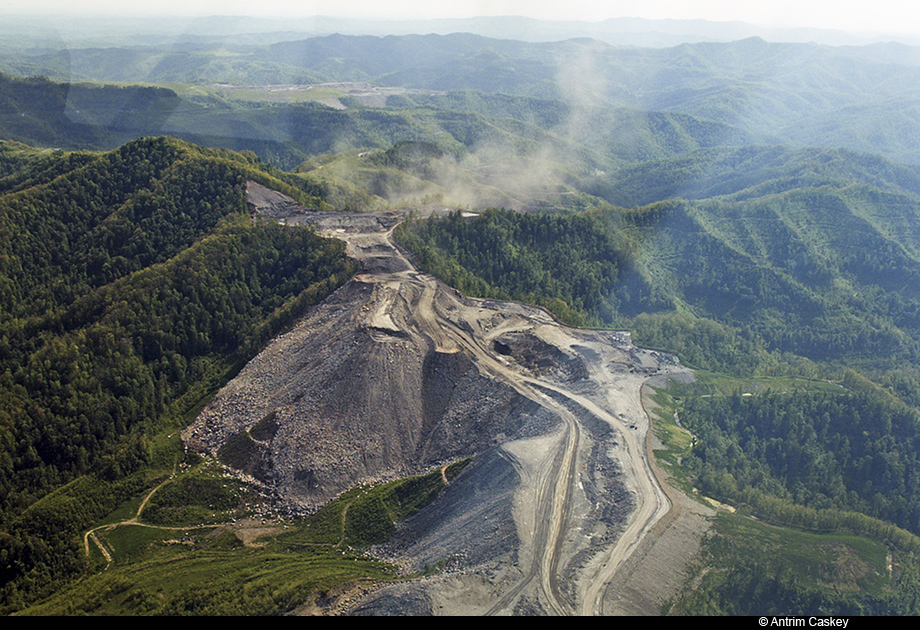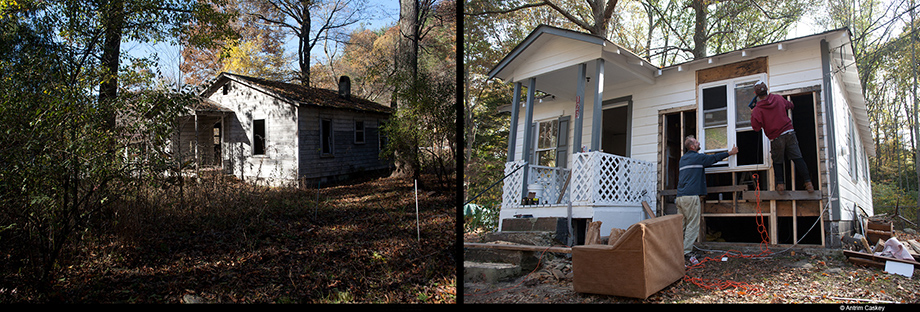Notes
Antrim Caskey's "Dragline": Moving to Appalachia
Maria Gunnoe, town of Bob White, West Virginia: “With mountaintop removal, the species we are losing is the human species — just because we’re hillbillies. Hillbillies are the last people you can make fun of — it’s acceptable. We do have educations. We do have lives. There’s going to be an uprising here; the coal industry has turned us into activists. I try not to hate, I really do. There’s a part of me that feels sorry for them. There’s a part of me that would be standing with my foot on their throat and I wouldn’t feel sorry for them.” (as quoted in Grist)
This is the second post of photographer Antrim Caskey’s Mountaintop Mining Watch series from West Virginia on mountaintop removal by coal companies.
Antrim was working at the New York Independent Media Center in 2005 when Maria Gunnoe walked through the office door and began telling her story. Ms. Gunnoe was in town to protest at Massey Energy’s shareholders’ meeting, as she lived right next to mining operations on the Big Branch Creek — “they’re mining coal in my bedroom” — and her home was flooded seven times and her water contaminated when the mountains were blasted apart for precious coal. She almost drowned with her children in the dark water, which almost washed away her house, and her well water is too toxic not just for drinking but even washing. She was, as Antrim remembers, “focused on me like a laser beam, and I went down there for the first time three days later. It was Memorial Day Weekend.”
 May 31, 2005: Mountaintop removal coal mining in southern West Virginia.
May 31, 2005: Mountaintop removal coal mining in southern West Virginia.
Volunteer pilots from South Wings flew her over the region for the first time, and it was immediately apparent what mountaintop removal does to the earth. It is “strip mining on steroids,” said Judy Bonds, the co-director of Coal River Mountain Watch. What happens is that the coal that is easy or less invasive to get at — either by traditional digging or even earlier surface mining — has largely been exhausted, so the mountains are now taken apart entirely.
Antrim relates, “Mountaintop removal annihilates communities, mountain hamlets and hollows, because they take off the mountain and put it in the valley below. Flooding, getting covered up in poisonous dust, blasting which damages foundations of buildings: everything becomes a massive industrial site. It turns headwater streams into pollution spillways. The 1977 Surface Mining and Reclamation Act (SMCRA) turned oversight over to the states and not the federal government, which essentially means that there is no oversight.”
“After that first trip, I started spending half my time in West Virginia, falling in love with the mountains, savoring the essence. The issue was heating up. I made more than twenty trips in three years, but my head was out of New York. It was all I wanted to do. So in 2008, I moved to Rock Creek, pop. 400, in southwest West Virginia, to a dilapidated compound of houses that I helped renovate, called the Ford Addition.”
 The first Halloween at the Ford Addition.
The first Halloween at the Ford Addition.
Antrim continues, “It’s a coal-industrial complex. We live where they mine, in West Virginia. They burn it in Ohio power plants. They dump it in Tennessee, where they store the coal ash waste from the power plants.”
–Alan Chin
PHOTOGRAPHS by ANTRIM CASKEY / APPALACHIA WATCH
Please see the other posts in the Mountaintop Mining Watch series.




Reactions
Comments Powered by Disqus